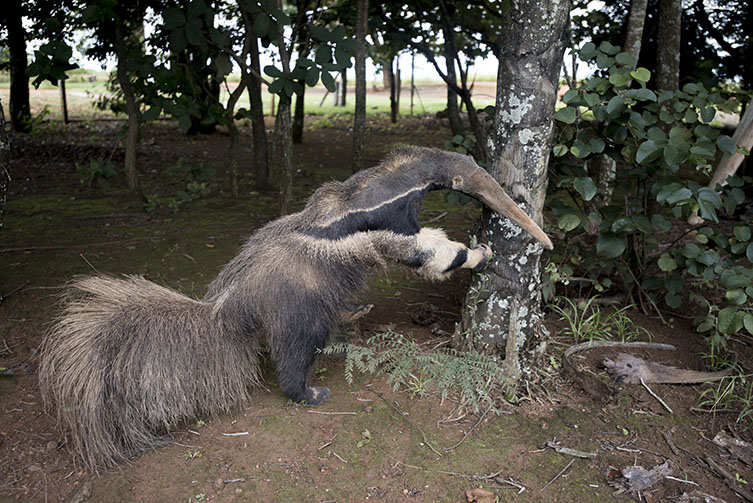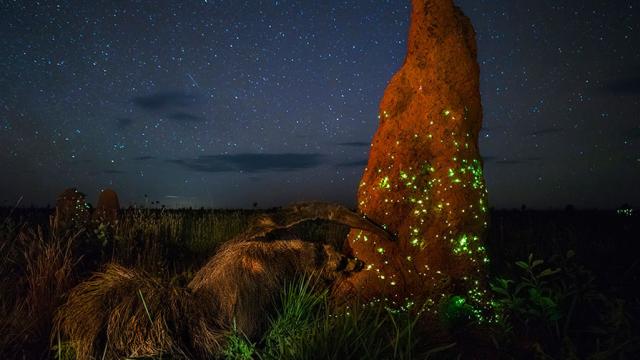The Natural History Museum of London has disqualified a winning image from its 2017 Photographer of the Year competition on the grounds that the photographer almost certainly used a stuffed anteater – a blatant violation of the contest rules.
The disqualified image. Photo: Marcio Cabral/NHM
It was a photograph that looked too good to be true. As we wrote back on 19 October 2017, when the award was announced:
There’s a lot going on in this photo taken by Marcio Cabral in Brazil’s Cerrado region. Click beetle larvae embedded on the outer layers of the termite mounds are glowing in a bioluminiscent green, which they do to lure in their prey – flying termites. Meanwhile, a giant anteater is also going for the termites, sticking its snout and nose into the mound to reach the termites inside.
The photo, titled “The Night Raider”, took top prize in the NHM’s 2017 Animals in their Environment category, but “after a careful and thorough investigation into the image“, the Natural History Museum has decided to disqualify it from last year’s competition.
The reason, according to the museum, is that it is “highly likely” Cabral used a taxidermied specimen of an anteater in the photo. That’s against contest rules, which state that “Entries must not deceive the viewer or attempt to misrepresent the reality of nature”.
The NHM launched an investigation after receiving an anonymous tip in March. Five experts were brought in, including a taxidermy expert, three mammal experts and an anteater specialist.

A photograph showing the taxidermied anteater. Photo: NHM
In terms of evidence, the smoking gun was a high-res image of a stuffed anteater that’s currently on display at the visitor’s centre at the Portão do Bandeira gate. This centre just happens to be at one of the entrances of the Emas National Park in Brazil – the same park where the Night Raider photograph was taken.
“The five scientists, working independently of each other, all concluded there are elements of the animal’s posture, morphology, raised tufts of fur and patterns on the neck and head that are too similar for the images to show two different animals,” writes the NHM. “The experts would have expected some variation between two individuals of the same species.”
The museum contacted Cabral to assist in the investigation, and he provided unprocessed image files taken over the course of the film shoot. But for reasons Cabral couldn’t explain, he was not able to provide any other photos with the alleged bona fide anteater in it.
“Mr Cabral strongly denies that the anteater in the image is a taxidermy specimen,” the NHM writes, adding that he “also provided a witness who claims he saw the live anteater”.
So shameful. But also hilarious.
